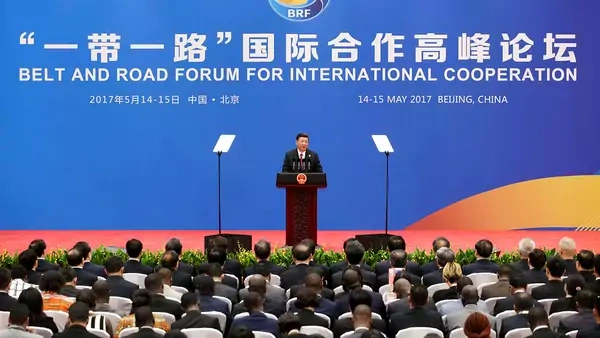Geostrategic and Military Drivers and Implications of the Belt and Road Initiative

January 25, 2018

- Testimony
- Testimony by CFR fellows and experts before Congress.
More on:
In testimony before the U.S.-China Economic and Security Review Commission, Ely Ratner assessed the geostrategic drivers and implications of China’s Belt and Road Initiative (BRI). He recommended situating the U.S. response to BRI within a comprehensive and competitive China policy that reasserts U.S. leadership in economic, military, political, and information domains. To this end, the United States should address security concerns that result from BRI by preventing Chinese control of the South China Sea, rejoining the Trans-Pacific Partnership, shifting overseas security burdens to China, enhancing U.S. broadcasting and information operations, and building capacity in recipient countries to manage and evaluate potential BRI projects.
Takeaways:
- BRI will likely result in increased overseas access and presence for the People’s Liberation Army. To limit the destabilizing effects of greater Chinese force projection capabilities, the United States should redouble efforts to sustain its military advantage in East Asia and prevent Chinese control of the South China Sea.
- The security and military implications of BRI will largely result from perceptions of a China-led economic order in Asia, whereby Beijing’s potential inducements and punishments will lead countries to limit their security cooperation with the United States and be less willing to push back on Chinese assertiveness. To counter these efforts, the United States will have to exhibit greater leadership on trade and economics in Asia, providing an economic alternative by rejoining the Trans-Pacific Partnership or initiating an equally ambitious multilateral arrangement.
- The influence China is garnering from Belt and Road—and the ancillary effects on security and military matters of importance to the United States—far outstrip the actual economic value of the projects. This calls for U.S. media and information platforms that can provide more public information about the facts and fictions of BRI, as well as the degree of U.S. and other countries’ investment and assistance throughout Asia.
- Negative externalities will develop from BRI if recipient countries are subject to corruption and coercion, or caught in debt traps that China exploits for political and strategic ends. The United States should therefore team up with like-minded countries (including Australia, Japan, and Singapore) to provide technical assistance that would help recipient countries evaluate proposed major infrastructure projects.
More on:
 Online Store
Online Store